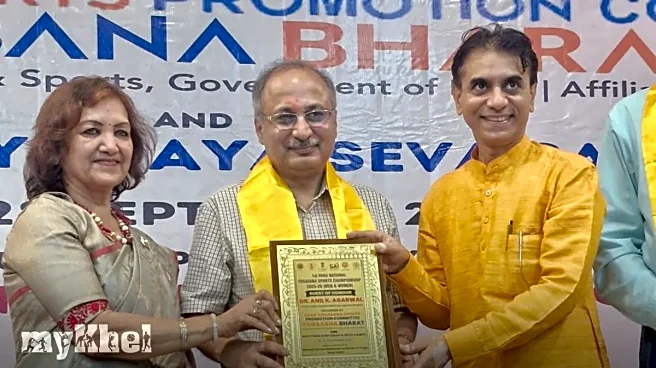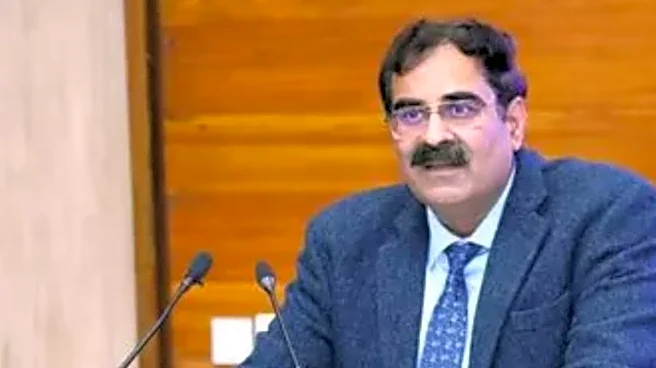What is the story about?
The Ministry of Consumer Affairs has received between 3,500 and 4,000 complaints via the National Consumer Helpline (NCH), alleging that companies are not passing on the benefits of the recently implemented Goods and Services Tax (GST) rate cuts, according to sources speaking to CNBC-TV18.
"On average, about 400 complaints are being lodged each day, with the highest volumes coming from Uttar Pradesh, Bihar, Delhi, Madhya Pradesh, and Rajasthan," the sources said.
The ministry has forwarded these complaints to the Central Board of Indirect Taxes and Customs (CBIC) for investigation and remedial action.
"The bulk of grievances relate to e-commerce platforms, where consumers say that reductions in GST have not translated into lower prices, especially on FMCG items. Complaints are also being raised for consumer durables and automobiles," the sources added.
The GST 2.0 overhaul
These complaints follow the government’s sweeping tax reforms, dubbed GST 2.0, which took effect on 22 September 2025.
Key highlights of the reform include:
The government has abolished the 12% and 28% slabs, consolidating most goods and services under 5% and 18% tax rates, while retaining a 40% rate for luxury and “sin” goods.
Over 375 items reportedly saw tax cuts, spanning essential goods, electricity-intensive items, small cars, consumer electronics, and more.
Items like soaps, toothpaste, and packaged foods were moved from 18% to 5%, while goods such as small cars, televisions, air conditioners, and two-wheelers that were taxed at 28% now attract 18% GST.
Various rationalisations were introduced: GST on man-made fibres and yarn was slashed from 12% to 5%, and tax on commercial goods vehicles was cut from 28% to 18%.
These reforms followed initial proposals announced in early September to stimulate demand amid global headwinds.
Following the rollout, many companies reported upticks in orders and sales, with automakers, electronics firms, and FMCG producers seeing record bookings and dispatches.
Complaint trends and enforcement challenges
According to sources, key trends include:
Challenges highlighted include:
Implications and outlook
The tax rationalisation aims to simplify the GST regime and boost consumer demand. Regulators intend to ensure the fiscal impact reaches households.
The volume of complaints indicates compliance gaps among smaller sellers and digital platforms. How swiftly the CBIC and state tax authorities act will be closely watched.
For consumers, the message is to monitor invoices and report issues. For businesses, the mandate is to update pricing and systems to reflect revised rates. The government’s follow-through on complaints will influence how effectively GST 2.0 supports consumption and trust in the tax framework.
"On average, about 400 complaints are being lodged each day, with the highest volumes coming from Uttar Pradesh, Bihar, Delhi, Madhya Pradesh, and Rajasthan," the sources said.
The ministry has forwarded these complaints to the Central Board of Indirect Taxes and Customs (CBIC) for investigation and remedial action.
"The bulk of grievances relate to e-commerce platforms, where consumers say that reductions in GST have not translated into lower prices, especially on FMCG items. Complaints are also being raised for consumer durables and automobiles," the sources added.
The GST 2.0 overhaul
These complaints follow the government’s sweeping tax reforms, dubbed GST 2.0, which took effect on 22 September 2025.
Key highlights of the reform include:
The government has abolished the 12% and 28% slabs, consolidating most goods and services under 5% and 18% tax rates, while retaining a 40% rate for luxury and “sin” goods.
Over 375 items reportedly saw tax cuts, spanning essential goods, electricity-intensive items, small cars, consumer electronics, and more.
Items like soaps, toothpaste, and packaged foods were moved from 18% to 5%, while goods such as small cars, televisions, air conditioners, and two-wheelers that were taxed at 28% now attract 18% GST.
Various rationalisations were introduced: GST on man-made fibres and yarn was slashed from 12% to 5%, and tax on commercial goods vehicles was cut from 28% to 18%.
These reforms followed initial proposals announced in early September to stimulate demand amid global headwinds.
Following the rollout, many companies reported upticks in orders and sales, with automakers, electronics firms, and FMCG producers seeing record bookings and dispatches.
Complaint trends and enforcement challenges
According to sources, key trends include:
- E-commerce platforms not recalculating prices in line with the new GST structure.
- FMCG items accounting for the largest share of complaints.
- Durables and automobiles making up the next biggest segments.
- High complaint volumes from UP, Bihar, MP, Rajasthan, and Delhi.
Challenges highlighted include:
- Verification complexity: Scrutiny of invoices, cost structures, and time-of-supply rules is required.
- Multiple sellers on e-commerce platforms: Systematic audits may be needed.
- Enforcement lag: Anti-profiteering investigations can be time-consuming.
- Consumer documentation gaps: Some complaints lack supporting invoices.
Implications and outlook
The tax rationalisation aims to simplify the GST regime and boost consumer demand. Regulators intend to ensure the fiscal impact reaches households.
The volume of complaints indicates compliance gaps among smaller sellers and digital platforms. How swiftly the CBIC and state tax authorities act will be closely watched.
For consumers, the message is to monitor invoices and report issues. For businesses, the mandate is to update pricing and systems to reflect revised rates. The government’s follow-through on complaints will influence how effectively GST 2.0 supports consumption and trust in the tax framework.
Do you find this article useful?
/images/ppid_59c68470-image-175923010586569136.webp)









/images/ppid_59c68470-image-175915253140397365.webp)


/images/ppid_59c68470-image-175912504364731353.webp)

/images/ppid_59c68470-image-175912008513373685.webp)
